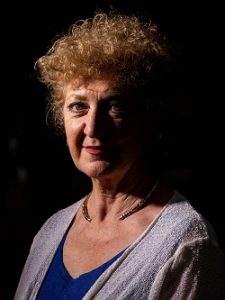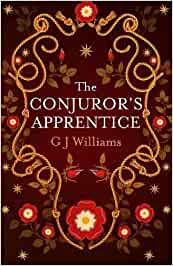Writing Historical Crime – Bringing your Characters to Life
Writing historical crime – bringing your characters to life

Picture Credit Charlotte Graham
One of the joys of writing historical crime is that you have centuries of fascinating characters to bring into your writing, but also the potential for inserting imagined characters who add to your story. In The Conjuror’s Apprentice, I use real people in history – John Dee, William and Mildred Cecil, Mary Tudor – but I fill the gaps and add balance through imaginary characters. For example, my detective, John Dee really existed. As in the book, he was a scholar, a theologian, an astronomer and a man who dabbled with the spirit world and angels.
Excellent biographies portray him as a little fractious, constantly pursuing money and fame –not a character terribly high in EQ. So I needed an apprentice who would balance him – female and a woman who had deep intuition, kindness, and passion for others in need. Hence, I created his apprentice – Margaretta Morgan – and her fractious family.
If your book is a one-off story then you only have to work on the arc for each character in that one tale.
A series brings a whole new challenge and journey in which you need to grow, develop and deepen your characters. You are going to be with your main characters for a few years so you need to know them well before you start. There is no point adding something about your character or life in book three when it should have been part of the characterisation in book one. To develop my characters I do the following:
Create a full character description
This includes looks, background, character, psychology, hopes, fears, and foibles. You must decide their childhood events, their friends, their successes, and their disappointments.
For real characters, I read about them through bibliographies, Google research as well as online resources. It is very important to ensure you know what was happening in their life at the point of history in which you are writing. For example, in the first of my series, The Conjuror’s Apprentice, a key character, William Cecil, is lying low after trying to put Lady Jane Grey on the throne. It will be book three before he is a great spymaster of the Court for which he is best known. John Dee is only just getting interested in communicating with Angels which became his obsession in later years.
Look to other authors. Many prominent characters will also be in other books. See how they have depicted them. Most authors of historical fiction are natural researchers and want to portray as accurate a character as possible. This will give you a real insight into how another author sees and feels about that person. You do not have to copy the persona – but be aware that if there is a general consensus on how a person was, then stepping too far away might take you into the realms of fantasy. For example, every fiction book I have read with John Dee as a character depicts him as a serious, obsessive character. If I portray him as an uneducated fool my readers will reject the character, and likely the story.
For your created characters you have more licence. You can create characters you love, that you want to follow for years, who will grow and develop as you want them to blossom. But, beware of making them perfect. We all have a few fatal flaws and your characters need these too or they become too thin. So my conjuror’s apprentice, Margaretta Morgan, can be sharp-tongued, suspicious, and makes herself unlucky in love – at least for the first few books.
Your characters will also change as events happen to them in the series. In The Tudor Rose Murders, Cecil will become more cynical (true to history), John Dee more rapacious for spiritual knowledge (true to history) and Margaretta will become the product of many disappointments.
And that brings us to their arcs.
Your key characters need to develop through each book and over the series. I am not a detail person and so I do not plot well. However, through reading about real characters and imagining the life of imagined characters, I pretty well know what it going to happen to my key characters and how their personas will develop over the 50 years that the series will span.
Real character arcs are pretty well dictated by historical facts. Good bibliographies will tell you what was happening in their lives at any given time. But you need to weave into this how they might be feeling about it. My detective, John Dee, will start embittered by his fall from social favour and I need to imagine the psychology of a man raised in wealth and now finding himself in poverty and poor family reputation. By book four, he will have become obsessive as he delves further into the supernatural world in a wild pursuit of speaking with angels to get the fame he craves. The life events are based on fact. John Dee was always admired and suspected in equal part and so I must put myself into the head of a man who is always just a breath away from the respect and recognition he so desires.
Imaginary characters need to be shaped. You need to project forward in their lives and imagine what will have happened to them at key points. This means you need to know where life will take them and the reactions they will have. With John Dee’s apprentice, Margaretta Morgan, I already know how her emotional life will work through, when her mother dies, how she will navigate the relationships with her family, and how she will develop into a strong-minded and intelligent co-detective and not just an apprentice.
For secondary characters, I know when they will appear and when they disappear. Beware of making secondary characters pop up as a convenience. If they are going to be key to books one and five – at least have them mentioned in the intervening books or have them taken out of sight and story through a viable story-line such as leaving the country.
Finally comes the challenge to bring real and imagined together. I start with my character descriptions and then attempt the following:
I think about how the characters would interact if they are in each other’s company. Would they like each other, trust each other? What are they hiding from each other? Would they laugh, argue, or simply have a formal conversation? How do they react when one annoys another or if they have a deep bond? Maybe it’s the psychologist in me, but I need to see each character through the eyes of the other and that helps me work through their reactions and interactions.
I think about the day-to-day lives of my characters. Would life bring them together or is it the events of the story? If it wouldn’t be natural for them to meet, then you have to create the vehicle.
I think about the motives for each character that will influence their behaviours. William Cecil is driven by his care for Elizabeth and seeking future power but low recognition. John Dee is driven by a need for recognition and fame. Margaretta is driven by duty, a need to provide and loyalty. So my real characters (Cecil and Dee) are at odds and my imaginary character (Margaretta) has to navigate the tensions between them and the fact that they both want control.
Finally, believe in delicious coincidence. In one character in book two, The Rogues Shadow, I needed a male character to be a secret philanderer under a veil of social gentility and good standing. Many weeks into my research – history gave me a gift. I found reference to an old rumour that he was found in a compromising position with his daughter-in-law and had her sent to a nunnery to cover his salacious activities. If you want to write history – it will often help you!
To conclude, there is no story without great characters. You bring your characters to life through good research into historic figures and allowing your imagination to fill the gaps with your constructed characters.
If you are writing a series, learn to love them all for they will be your travel-companions for many years. You will befriend them, get annoyed with them, and get frustrated when they do not really work. Treat them like family – you cannot always choose, but they are with you for the journey of the series and the rest of your life.
—
G.J. Williams is Welsh but raised in England. She grew up in Somerset where history, story-telling and adventure were the stuff of life. She wrote as a child but then a career in academia followed by international consulting meant that it was some years before the love of crafting a tale came back to the forefront of life. She now lives between London and Somerset and is often found writing on the train journey next to a grumpy cat and a cup of tea. The tap of the keyboard keys transports her to medieval England and all the sounds, smells and intrigues of life. When not writing, life is a busy muddle of research, travelling to historic sites, walking, woodwork, or sailing the blue seas on her beloved boat.
She has one dream as a writer – to be chosen by readers who love the greats such as CJ Sansom, SJ Parris and Rory Clements and to see John Dee and Margaretta win the hearts of all who pick up The Conjuror’s Apprentice.
Social media links
Website: www.gjwilliamsauthor.com
Follow her on Twitter @GJWilliams92
Instagram: gjwilliams92
Facebook: G J Williams Author
‘A thoroughly engaging tale, beautifully written, and highly evocative of the period…Highly recommended. ‘ Zoe Sharp
THE CONJUROR’S APPRENTICE
 Born with the ability to hear thoughts and feelings when there is no sound, Margaretta Morgan’s strange gift sees her apprenticed to Doctor John Dee, mathematician, astronomer, and alchemist. Using her secret link with the hidden side and her master’s brilliance, Margaretta faces her first murder mystery. In the cruel time of Tudor England, Margaretta and Dee must uncover the evil bound to unravel the court of Bloody Mary.
Born with the ability to hear thoughts and feelings when there is no sound, Margaretta Morgan’s strange gift sees her apprenticed to Doctor John Dee, mathematician, astronomer, and alchemist. Using her secret link with the hidden side and her master’s brilliance, Margaretta faces her first murder mystery. In the cruel time of Tudor England, Margaretta and Dee must uncover the evil bound to unravel the court of Bloody Mary.
The year is 1555. This is a time ruled by fear. What secrets await to be pulled from the water?
BUY HERE
Category: How To and Tips

























